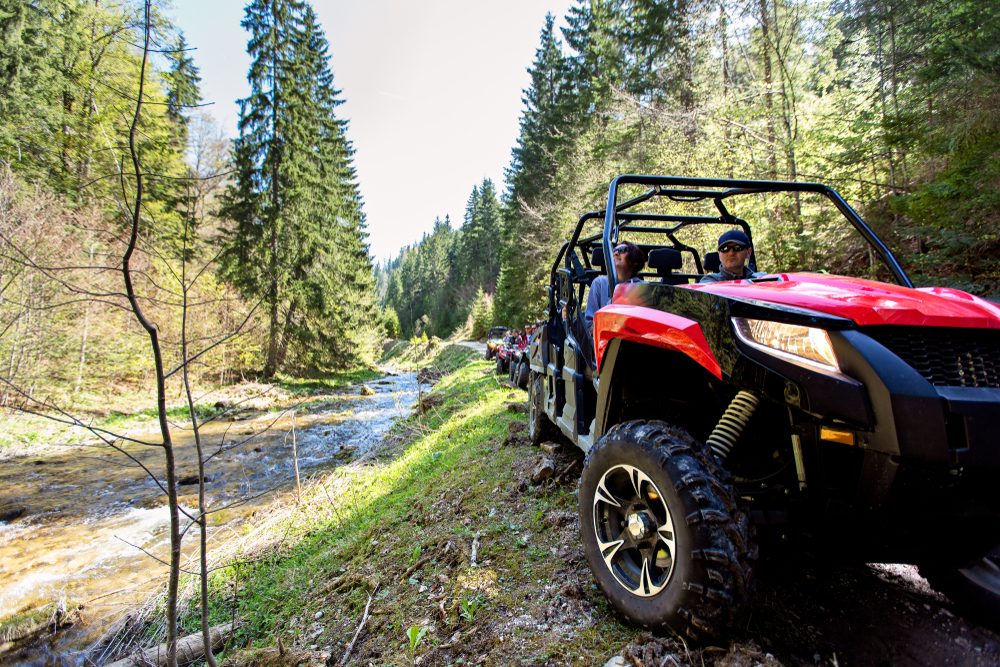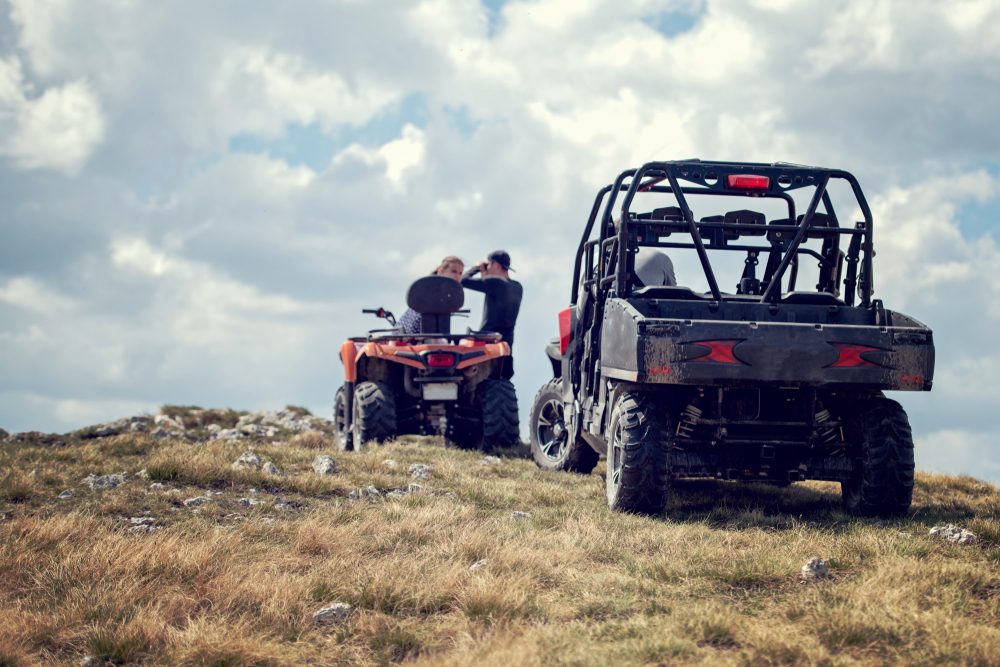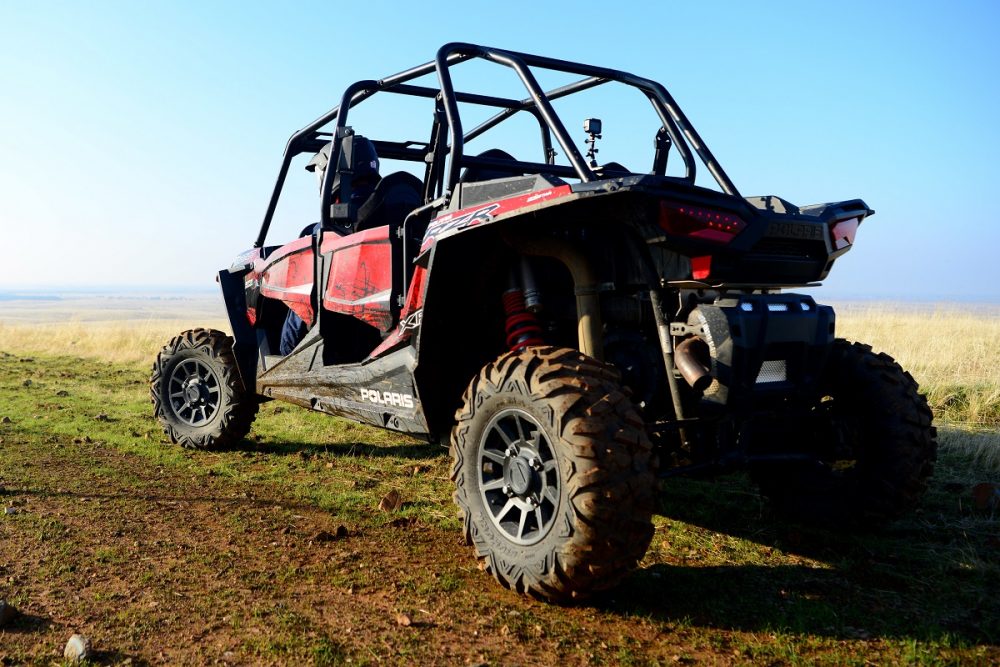Tips When Buying Side-By-Sides or UTVs
This article is sponsored by compett.org.

A UTV is also referred to as a side-by-side. Although not a necessity for many, the market for side-by-side vehicles is expanding. While many use the UTV only for recreational purposes, others have found it to be a useful aid in their daily life. This includes those living in rural areas or farms, where hauling of farm equipment and goods is necessary.
Be it a need or a want, it’s also worth noting that buying a UTV isn’t going to be cheap. Whether used or brand new, it’s going to cost you a lot of hard-earned cash. Because of increasing demand, also, manufacturers have expanded their capacity to keep providing more and more to the UTV market.
While a wide range of options may be a good thing, it can also come in negatively, such as only confusing you even more as to which choice might be the best buy for you. To help ease the shopping process for you, here are some tips to keep in mind, when buying side-by-side vehicles.
1. Take the UTV out for a test ride
This first tip is precisely one of the most important reasons why you should never rush the process of buying side-by-sides. You must give yourself ample time to take the UTV out for a test ride. As you give the UTV a test ride, be wary of the following seven S’s:
- Stopping. Of the many parts and functions of your side-by-side vehicle, the brakes are one of the most important. The pedal should feel firm. Else, you’re going to be in for some repairs.
- Starting. When you turn on the UTV, it should immediately burst into life. Be worried when the engine takes a long time to start, as this could mean a weak battery.
- Stability. While you’re on your side-by-side, it should feel stable enough. The ride should feel straight and tight. Most of all that you’ve got good control over the vehicle. When you don’t feel this confident, it can mean that you’re in for potential issues in the suspension.
- Smoke. When the engine is running, you shouldn’t see a lot of smoke coming from the exhaust.
- Speed. UTVs are generally made to be vehicles with high power. If the speed isn’t translated well into your vehicle’s performance, then you should move on and choose another one instead.
- Slippage. The CVT belt shouldn’t feel like it’s slipping. Else, that means that you’ll eventually need to buy a new belt. This can also be a telltale sign of clutching issues. In this case, that can be an expensive problem to fix.
2. Check the driveline
A UTV is a 4×4 vehicle. It’s meant to withstand whatever off-road trail or park you wish to go on. This means that inherently, it’s equipped with CV boots and axles. These comprise the driveline of your UTV. Generally, the main point for you to remember is that you’ll never want to hear any noise coming from the driveline, once you take the UTV out for a test drive.
Here are key pointers to remember, as regards checking the driveline:
- The CV boots shouldn’t be torn or cracked.
- If the UTV you’re looking to buy has been modified, you may want to replace the stock axles. Else, you aren’t able to take your UTV at a further bend for a better lift. This can come in handy, particularly during trails that have a lot of pressure with difficult terrain.
3. Be wary of deceptive sellers
Deceptive sellers are everywhere. They’re not really in it to give you the best products. Instead, they’re only in business to get the runoff your money. If you’re prudent enough with your selection process, you can easily spot one. Some, as quick through the red flags that they see while conversing with the dealer.
Here are some tips to spot a deceptive seller:
- Talk, talk, talk. The only way for you to get to know a seller deeper is to talk more. Ask a lot of questions, and try to fish out for other information. If your gut feeling tells you that the seller is withholding a lot of other details, then flush that dealer out from your list of options.
- Ask why they’re selling the UTV. This applies if you’re buying a secondhand side-by-side. When you ask this question, you may be able to uncover some tactics that they’re hiding, such as stubborn defects that they simply don’t want to deal with anymore. No, you don’t want to bring home somebody else’s problem, not especially when in exchange, you’ve also paid a hefty sum of money.

4. Check the oil
Check the oil levels, even if you’re buying from a brand new UTV dealer. A simple way for you to do this is to take out the oil dipstick. Then, sniff it. If the oil smells terrible despite it looking fresh and new, then that could mean a major engine issue. If you bring home that UTV, you’re in for some serious repairs. Choose another vehicle instead. If you’re not well versed with how oil is supposed to look like, it can also help to have an expert mechanic by your side.
5. Be wary of a low or dirty coolant
For UTVs, a liquid-cooled engine is prevalent. This is why it’s imperative for you also to check the coolant levels. The coolant should be on a consistent orange or green color. Note that this plays a significant role in the overall function of your UTV, as the coolant acts as a lubricant to prevent corrosion in the motor. When this is replaced by tap water, you’re in for some serious trouble.
Here are some pointers to remember, regarding coolant levels:
- Make sure that the engine has cooled down first after your test drive before removing the radiator cap.
- Ineffective cooling may lead to hidden damages in the power plant of the machine.
6. Check the gas tank
Especially when you’re buying a secondhand, it’s also essential to check the gas tank. Give the gas tank a quick smell. If it smells rancid, this can mean problems with the fuel injection system. It can also be a telltale sign of a carburetor overhaul. This is usually a minor problem. Hence, a useful technique for you to do is to ask the seller to lower the price because of that problem. If they’re willing, then that’s a good deal. If not, walk away.
7. Inspect the tires
When you’re buying a new vehicle, inspecting the tires shouldn’t be much of a problem. You already know by then that the UTV you’re looking to buy comes with the stock tires. There’s little to no need at all to replace these tires unless, of course, you’re looking to modify your UTV. With a used one, however, if the tires look worn out, ask for a lower price. That way, you’ll have enough leeway on your budget to buy a new set of tires. When the rest of the UTV functions well, except only for the worn-out tires, don’t walk away from that vehicle. You may be able to get an even better deal, lower than the budget you expected.

8. Inspect the frame
The frame of the UTV refers to its body and the cage-like structure. Before you decide on a final purchase, you need to give the frame a thorough inspection. Remember that the frame is one line of protection for you, against possible hard falls on difficult terrain. Hence, it must always be in good condition.
When checking the frame, be wary of the following:
- Possible hidden cracks or awkward bends.
- Fresh plastics and body panels that may be concealing serious problems
- Rusty mounting points
9. Factor in the overall appearance
Just as is the case when you’re buying other vehicles, do factor in the overall physical appearance as well. First impressions are lasting, and you’ll want to be able to make a good one through your vehicle. Apart from its functionality, you’ll also want to have a UTV that looks as good as it works. Especially when you’re going to use your UTV for trails, there’s that sense of pride that you can have, through having a good-looking one. All other factors already considered, don’t forget its physical look too.
10. Availability for custom parts
There are some UTVs that are better off for custom parts than others. Especially when you want to achieve a particular customized look, handling, or ride, select the one that also enables this option for you. The UTV you choose should be one that still functions well, despite it already having been replaced by custom parts of your choice.
Conclusion
If you’re a UTV enthusiast or even one that needs it in your life, the day that you’re finally going to buy another UTV certainly is going to feel like one of the best days of your life. But, before you get to enjoy all the highs of having a new UTV, you also must go through the rigorous process first of selecting through the options available in the market. That way, you’re better assured that the UTV you’re taking home is indeed one that suits your needs and preferences. Else, you might end up with a purchase that won’t even sit well with you. Slow down, consider the purchase, and follow these tips. Then, you’ll be headed to the right side-by-side vehicle.

The News Wheel is a digital auto magazine providing readers with a fresh perspective on the latest car news. We’re located in the heart of America (Dayton, Ohio) and our goal is to deliver an entertaining and informative perspective on what’s trending in the automotive world. See more articles from The News Wheel.

